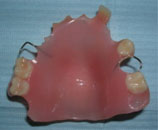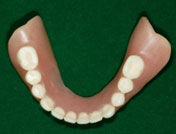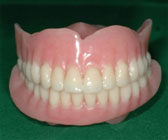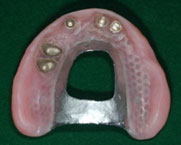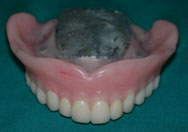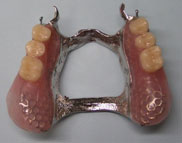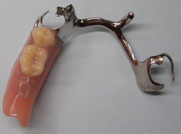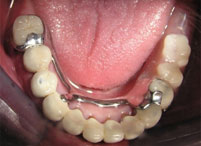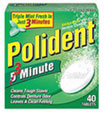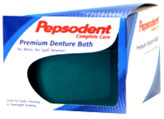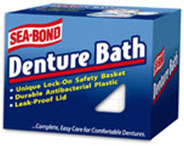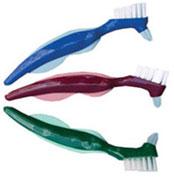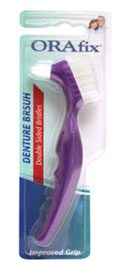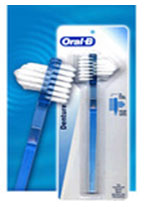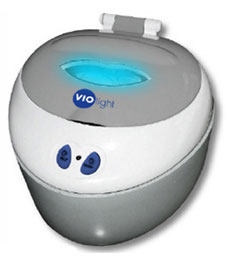Introduction
The aesthetic impact of tooth loss can be highly significant and may be more of a concern to a patient than loss of function. It is generally perceived that in today’s society, loss of visible teeth, especially in the front region of the mouth, carries with it a significant social stigma. With the loss of teeth and diminishing residual ridge, facial features can change secondary to altered lip support and reduced facial height as a result of a reduction in occlusal (‘bite’) vertical dimension. Meaning to say, the face seems ‘shorter’ vertically due to the loss of support from the missing teeth; while the loss of the accompanying gum and bone from the front teeth gives the appearance of a flatter upper lip (collapsed). Restoring facial aesthetics in a manner that maintains an appropriate appearance can be a challenge, and is a major factor in the decisions made for various prosthetic treatments. Individuals with a full complement of teeth had report some variation in their levels of chewing function. The loss of teeth can lead a patient to seek care as they notice diminished functions of their teeth a level that is unacceptable to them.
Any dentures should meet the basic objectives, which includes;
- The elimination of oral disease to the greatest possible
- The preservation of the health and relationships of the teeth and the health of oral and surrounding structures
- The restoration of oral functions that are comfortable, aesthetically pleasing and do not interfere with the patient’s speech
Patients who have worn dentures successfully for a period of time may return for further service because of looseness, soreness, chewing inefficiency, or aesthetic changes. These difficulties may be caused by disharmonious occlusion (biting) that existed at the time the denture were inserted or changes in the structures that support the dentures. Proper care of the denture is important to ensure health and longevity of the remaining oral structures. How often the dentist should examine the mouth and denture depends on the oral conditions of the patient. Patients who are prone to tooth decay or who have tendencies toward gum disease or ‘thinning’ of the bone should be examined more often. Every 6 months should be the rule if conditions are normal.
How Denture Causes Harm?
- Balance on biting is desirable with complete dentures because unbalanced biting may cause instability of the dentures (rocking) and trauma to the supporting structures.
- The teeth will be more susceptible to decay when a removable partial denture is being worn due to the retention of food debris and accumulation of plaque, or biofilm.
- Gum damage to the supporting teeth due to lack of tissue support at any distal extension bases. This happens when there is no natural tooth present for support at the back of a denture.
- Inflammation of gingival tissues covered by the denture framework due to accumulated food debris.
- Denture stomatitis is a chronic inflammation of the denture bearing mucosa (the basal seat) due to trauma from ill-fitting dentures, a parafunctional habit, hypersensitivity to the denture material, infection with Candida albicans (fungal infection) and poor oral denture hygiene. Most patients with denture stomatitis are unaware of their lesions, since it is asymptomatic. A small number of the patients complain of a burning or itching sensation.
- Papillary hyperplasia or papillomatosis is a granular type of palatal inflammation. The incidence is related to the presence of relief chambers in dentures and to the relief-chamber effect that can develop as a result of uneven settling of a maxillary denture. Papillomatosis is significantly higher in patients who wear their denture throughout the 24-hour day, and patients are urged to rest the tissues of the mouth by removing their dentures at night.
- Hyperplastic tissue is seen in the form of fibrous tuberosities, soft flabby ridges and papillimatosis cause by trauma from denture wearing, habits and duration of wear.
How To Maintain/Ways?
Types of dentures There are 2 types of dentures; Acrylic resin denture and Metal-based denture.
The material most often used in making denture bases is polymethyl methacrylate and is commonly called acrylic resin. Acrylic resin denture can be made for a complete or partial denture depending on the number of missing teeth.
The most common design of acrylic resin partial denture involves the intimate contact of the denture base with the gum of many of the remaining teeth, thus increase plaque accumulation, food impaction contribute to increased levels of gingival inflammation and hyperplasia. In the absence of effective oral hygiene, caries and gum disease can be significantly accelerated.
Metal-based denture can be a complete or partial denture. Metal-based dentures are usually made from a combination of cobalt-chromium alloy and heat-cured acrylic resin. A well designed and accurately constructed skeleton framework metal partial denture can be a very successful means of replacing missing teeth; therefore, despite the increased cost, a metal base would provide better comfort for the patient.
Clasp breakage can be avoided by instructing the patient to remove the denture by the bases and not by repeated lifting of the clasp arms away from the teeth with the fingernails.
The dentures and the supporting teeth need to be kept meticulously clean. Inflammation of gingival tissue is prevented by removing accumulated debris and substituting toothbrush massage at areas covered by the denture framework.
The mouth and denture should be cleaned after eating. Simply rinsing the denture and the mouth with water after eating is beneficial if brushing is not possible.
Denture may be effectively cleaned by use of a small, soft-bristle brush with nonabrasive dentifrices, or even better with normal hand soap or normal dishwasher liquid. Household cleaners should not be used because they are too abrasive for use on acrylic resin surfaces.
Cleaning may be accomplished by use of a denture cleaning solution. The patient should be advised to soak the dentures in the solution for 15 minutes once daily, followed by a thorough brushing with dentifrices.
Immersion cleansers can be used as an adjunct to cleaning, through overnight soaking. Hypoclorite solutions are effective denture cleansers for acrylic denture, but have tendency to tarnish chromium-cobalt frameworks and should be avoided.
Clean the denture over a basin partially filled with water so that the impact will be less if the denture is dropped accidentally during cleaning. Thin acrylic resin can break easily when the denture is dropped onto hard surfaces.
Denture should not be worn during sleep to allow the tissue to rest. The denture should be placed in a container and covered with water to prevent it dehydration and subsequent dimensional change. Dried-out denture will have difficulty in fitting in the mouth or in a worse scenario might have shrunk thus requiring a new set of denture to be made.
In some mouths the precipitation of salivary calculus on the dentures necessitates taking extra measures for its removal. Thorough daily brushing of the denture will prevent deposits of calculus. However, any build-up of calculus should be removed in the dental clinic and can be accomplished with an ultrasonic cleaner.
The routine oral review appointments are used to monitor the patient’s level of plaque control and to reinforce this when necessary. Inadequate denture and oral hygiene can hasten the loss of natural teeth by tooth decay and gum disease and may contribute to denture stomatitis. The best treatment for denture stomatitis is to prevent it, good oral hygiene and rest the tissues under the denture are essential. Other treatment of denture stomatitis includes the construction of new well-fitting dentures. Antifungal therapy can be instituted after an elective verification of candida albican infection.
Development of denture rocking or looseness may be the result of a change in the form of the supporting ridges. It should be corrected by relining or rebasing the dentures. Greater changes in these supporting tissues require the construction of new well-fitting dentures.
Accept denture treatment as something that cannot be considered permanent but must receive regular and continuous care by both the patient and the dentist.
Acrylic Dentures
|
|
|
|
|
|
Chrome Cobalt Dentures
|
|
|
|
|
|
|
|
|
Denture Cleanser
|
|
|
|
|
|
Denture Toothbrushes
|
|
|
|
|
|
|
|
| Last reviewed | : | 23 August 2019 |
| Writer | : | Dr. Rohani bt. Mahmood |
| Accreditor | : | Dr. Kamarul Hisham b. Kamaruddin |
| Reviewer | : | Dr. Roshima bt. Mohd Sharif |


